The Jimmy Olsen Blues
- Joseph Davis

- Jul 23
- 9 min read
Updated: Aug 18
Unlike Lois and Clark, the Jimmy Olsen of STAS was portrayed as a well-meaning dimwit, but the creative team apparently had other plans at first.
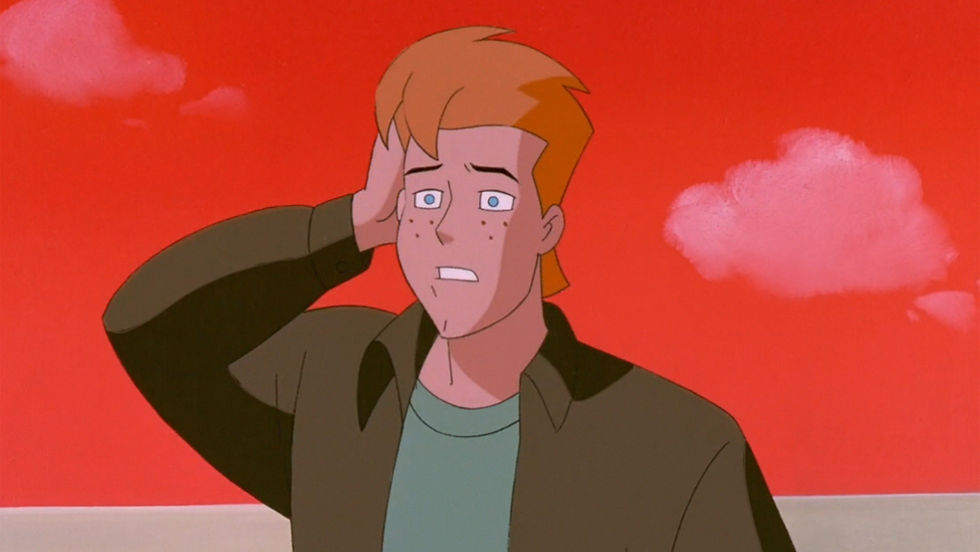
I’m still coming down from the high of watching James Gunn’s phenomenal Superman film last weekend. The casting, the story, the political and cultural overtones (yes, they were there, and they should be there!), and the super-powered dog were all wonderful, and they set up what may very well be a sublime, new cinematic universe that will hopefully avoid the mistakes of the MCU post-Avengers: Endgame. That said, one of the film’s assets that I realized upon reflection was its use of the Daily Planet staff. Throughout the movie, Lois Lane, Jimmy Olsen, Perry White, Cat Grant, Steve Lombard, and Ron Troupe all contributed to the humor and action. Unfortunately, the same cannot be said for Superman: The Animated Series (STAS), where the majority of them were either used in a diminished capacity or absent altogether.

As I discussed in a previous essay, STAS did not fully take advantage of its supporting cast the same way that Batman: The Animated Series (BTAS) did, and that can best be seen in its use of the Daily Planet characters that aren’t Lois Lane. For example, absent in the series was Sports Columnist (and frequent Clark Kent tormentor) Steve Lombard (first appearance Superman #264; June 1973), as well as Gossip Columnist Cat Grant (first appearance The Adventures of Superman #424; January 1987), who was replaced by original character Angela Chen, who herself was only utilized as “Exposition Lass” to provide info dumps (similar to BTAS’ Summer Gleeson, but with much less characterization). Political Columnist Ron Troupe (first appearance The Adventures of Superman #480; July 1991) did appear, but mostly in silent, background roles, only having lines in three episodes: “The Last Son of Krypton,” “Action Figures,” and “The Hand of Fate.” And as for Editor-in-Chief Perry White, who first appeared in a 1940s The Adventures of Superman radio serial, he was also largely used just to move the story along.

(It’s also worth mentioning here that Producer Bruce Timm originally pushed for a Black Perry White, which happened previously during production for Lois & Clark: The New Adventures of Superman [1993-1997]. As recounted by character designer James Tucker in a June 29, 2021 post on Twitter, “BT actually wanted Perry White to be [B]lack in STAS but was vetoed” [@JTuckerAnimator]. Eventually, however, progress would win out, and Perry White would be played by Black actors such as Laurence Fishburne in Man of Steel [2013] and Batman v Superman: Dawn of Justice [2016], Wendell Pierce in the aforementioned Superman [2025], and voiced by Darrell Brown in the animated My Adventures with Superman series [2023-present].)
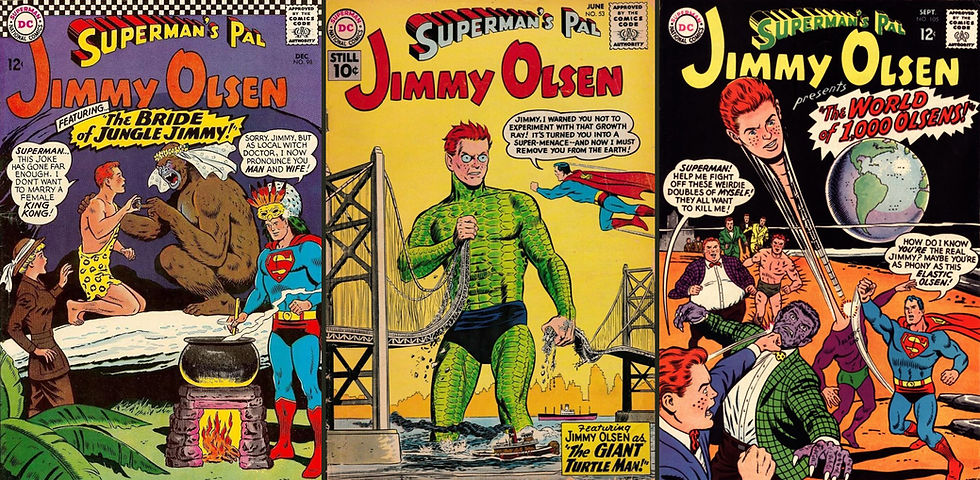
And then there’s Jimmy Olsen, the character often referred to as “Superman’s pal.” Originally appearing in Action Comics #6 (November 1938), Jimmy became enough of a popular supporting character to headline his own comic book series for twenty years, first as a hub of wacky Silver Age adventures, and then as a backdoor for Jack Kirby’s Fourth World concepts. Still utilized today, to varying degrees, the character is still considered a valuable asset to the larger Superman franchise. In an April 2005 interview with Wizard—where they were promoting their twelve-issue miniseries, All-Star Superman (2005-2008)—writer Grant Morrison gave what I feel to be the best summary of the Jimmy Olsen character:
Let’s face it, Superman’s pal would have to be the coolest guy on Earth. We’re doing Olsen as the guy every teenage boy wants to be—smart, fearless, funny, a big hit with the girls, a good loser, a great fighter, an action correspondent on the sexiest newspaper in town and best friend of [fucking] Superman! (qtd. in Cotton, “Morrison” 52)
Unfortunately, this was not the Jimmy Olsen that we received on STAS. Drawn to resemble an adolescent—youthful features, a head shorter than the other men in the series—he was a “slightly dim tagalong” for Lois and Clark whenever they were investigating a story and needed someone to talk to to avoid an awkward voiceover (Davis). And I mean it when I say adolescent—he doesn’t even look like he’s hit puberty yet, which makes his constant presence around the Daily Planet offices confusing because it feels like he should be at school (not that I would have wanted to see that; it would be like watching Clark Kent doing his taxes). All in all, it seems that the STAS creative team make some odd choices when designing their version of “Superman’s pal” (which is better summarized in the above video, created by the excellent Serum Lake YouTube channel), but we have since learned that this wasn’t always the case.

As previously stated, the creative team initially opted for a STAS more in tune with the “timeless” look of BTAS, with the entire show imitating the classic, 1940s Fleischer series of Superman animated shorts. Most likely created sometime in mid-to-late 1995, the above image of the Daily Planet staff (and Lex Luthor) features a classic take on Jimmy Olsen, with the familiar red bow tie. In a January 1995 interview with Comics Scene, Bruce Timm discussed his traditional take on the character:
It will be very much a ’40s kind of Jimmy Olsen, rather than the new, hip Jimmy Olsen. I like Lois & Clark a lot, I watch it every week, but I wouldn’t do it that way. I want to do something different. I like Jimmy Olsen as a young, 15-year-old kid. To me, that makes him a fun character. (qtd. in Jankiewicz 28)
However, this would later be abandoned by the creative team, as Timm—in an October 1998 interview with The Jack Kirby Collector—acknowledged how “[w]e didn’t wanna go back and make it look just like the Fleischer cartoons; I didn’t want anybody to put our show up against Fleischer’s and say, ‘Well, look, they’re doing the Fleischers, just not as well’” (qtd. in Khoury and Khoury III 18).
Our next detail would come in a July 1996 interview with Wizard, where Producers Timm and Paul Dini hyped the upcoming STAS. Among the revelations, the author disclosed how Olsen would be “working odd jobs at the Planet for Perry White, looking for a staff position” (Allstetter 48), to which Timm followed up with how “[h]e won’t be, ‘Oh, golly, Miss Lane.’ […] He’s a bit of a weasel” (qtd. in Allstetter 48). This would be corroborated by the character bio provided on the STAS pages of the original Kids’ WB! website:
A poor kid from Suicide Slums, Jimmy Olsen quickly learned the rules of the street in order to survive. He grew up fast on his feet, smart with his tongue, and—if need be—hard with his fists. He’s the sharper, cool, urban kid our young audiences will instantly root for. In addition, he’s Superman’s pal, which ain’t too shabby either.
Working as a photographer for the Daily Planet has been Jimmy’s dream, and even though he’s just freelance now, he’s after Perry White to hire him on full-time. Even so, that doesn’t stop Jimmy from acting like he’s already a core member of the staff. When Perry calls Clark and Lois into his office for a secret briefing, it’s not uncommon for Jimmy to tag along, nodding his head intently with everything Perry says until Perry notices Jimmy’s there and tosses him out. It’s not that Jimmy’s a troublemaker; he’s simply one of those confident, unflappable kids who has no idea that he frequently oversteps his boundaries.
Jimmy’s a techno-geek and an expert with computers, modems, and—of course—cameras. Once, when he found himself stalked by gunmen after foolishly breaking into a terrorist base, Jimmy figured out how to rewire a phone modem to broadcast to save Jimmy from the gunmen and capture the terrorist leaders. Superman chewed Jimmy out for getting into trouble, but allowed him to modify his signal device into the wristwatch Jimmy currently wears. Superman will always come if Jimmy needs him but has also warned Jimmy to use the signal only if it’s an emergency.
When he’s not hanging at the Planet, Jimmy lives with his mother, Sarah, in a modest Metropolis apartment. He doesn’t spend much time there, preferring to be out following up [on] some news lead like his heroes, Clark Kent and Lois Lane. Nothing stops Jimmy once he puts his mind to something. He’s impetuous and, sometimes, foolhardy when it comes to getting that big photo scoop. (“Jimmy”)

Irritating overuse of ’90s buzzwords aside, the above bio—featuring a young, aggressive hustler determined to make it as a photographer and journalist—seems a far cry from Timm’s original vision of the character, as well as from what we actually got. I mean, there were episodes that showed this side of Jimmy—such as his aiding Lois in infiltrating Lex Luthor’s first contact with Brainiac in “Stolen Memories,” his rescue of Superman in “Feeding Time,” and his impromptu war correspondence during Darkseid’s invasion in “Apokolips...Now!”—but they were few and far between. Most of the time, he was just a kid saying really obvious lines and getting stuck in cringe-inducing scenes like in “A Fish Story,” where we got forty-five collective seconds of Olsen awkwardly trying to drive Lois’ car. Is it any wonder that fans like Serum Lake and myself see this character as a missed opportunity? That said, my suspicions about what might have been would not be confirmed until twenty-eight years later, when a new detail was released in an indirect way.
Now, before I continue, a quick aside for context. As a DCAU scholar, one of my white whales is a copy of the original STAS series bible. By comparison, the BTAS series bible is readily available; I bought my original copy in the 1990s from a guy at a flea market selling screenplays. However, I had never even seen evidence of such an STAS document until 2024, when I stumbled upon this webpage that, apparently, contains evidence of an eBay auction that I am still kicking myself for missing out on. Apparently a 48-page document, it is on the shared sample pages that we see another early draft of Jimmy Olsen—later than the “timeless” Fleischer draft, but earlier than the adolescent, teenaged version we saw on STAS:
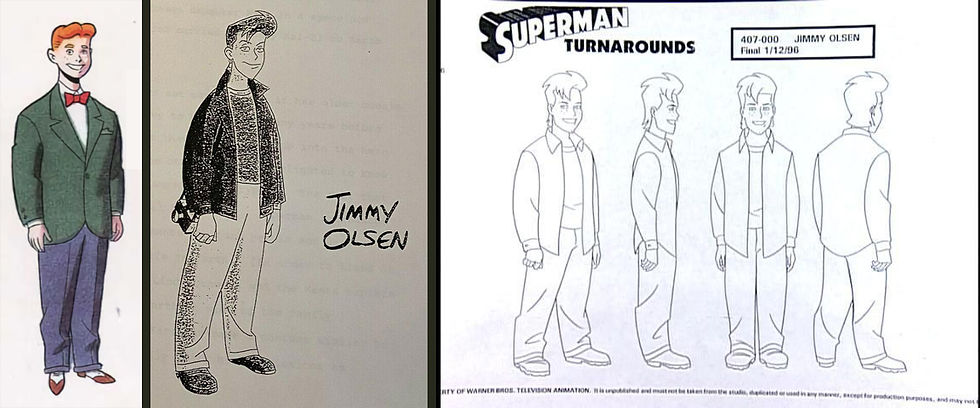
After seeing the midway Jimmy Olsen (above center), it’s obvious that—at some point in late 1995 (note how the STAS model sheet [above right] is dated January 12, 1996, implying that it was finalized by that date)—the creative team experimented with a design that was both modern and visibly older than the presumably 15-year-old incarnations. To me, he looks to be late teens / early twenties; in fact, I would compare him to Philip J. Fry from Futurama both in terms of age and general appearance. Now, paired with the above bio, this is a Jimmy Olsen I could see seeking adventure on the streets of Metropolis—a fast-talking young adult trying to weasel his way into a journalism gig without the requisite higher education, rather than a child playing hooky and being routinely put in danger by the criminally-liable Lois and Clark. Unfortunately, they went with the child in a move, I suspect, that was meant to ingratiate themselves with the Kids’ WB! network as, even then, they no doubt wanted an entry-level character for their intended audience of 6-to-11-year-olds, which turned into a detriment for the DCAU.

From All-Star Superman #4 (July 2006).
Real quick: do any of you have that one friend who, either by accident or through actively seeking it out, find themselves routinely getting roped into strange, unusual situations? Like, one week, your friend becomes the voice of a major American company, and the next week, you find out that the new person they’re dating is a witch that curses them for some reason? To me, this is what the character of Jimmy Olsen should be, and I think this is the avenue that James Gunn’s new cinematic universe is leaning towards.
What can I say? I agree with Grant Morrison. Ideally, “Superman’s pal” should be a combination of Archie Andrews and Peter Parker without the powers who functions as a “weirdness magnet” attracting all kinds of attention from the universe-at-large, which is how he met Superman in the first place. He’s a photographer, a gonzo journalist (as shown in Morrison’s All-Star Superman), and an influencer (like the version of the character from My Adventures with Superman) whose very presence as a dynamic personality acts as another shield allowing Clark Kent to maintain his secret identity. Much like the aggressive, in-your-face Lois Lane, you are so focused on what Jimmy’s doing that you barely notice the tall farm boy standing behind him watching everything with a barely-concealed smirk and a sparkle in his eye. And, as for his classic bow tie, it’s just part of his hipster wardrobe, as Morrison discussed in a January 2006 Wizard interview:
He’s kind of a cross between Tin-Tin and the preppy, golf-punk style. I thought Jimmy should be really modernistic and fashionable, and that’s the kind of clothes we thought would fit the retro look but could also be quite modern. He’s got to stay in fashion but also kind of out of fashion as well. (qtd. in Cotton, “All” 63)
Sadly, we didn’t get this Jimmy Olsen thirty years ago, but maybe we can this time.
Works Cited
Allstetter, Rob. “Men of Steel.” Wizard Magazine. Jul. 1996: 44-48. Print.
Cotton, Mike. “Morrison Morsels.” Wizard Magazine. Apr. 2005: 52. Print.
---. “Single Issue of the Year: All-Star Superman #1.” Wizard Magazine. Jan. 2006: 62-66. Print.
Davis, Joseph. “In the Shadow of the Bat: Remembering Superman: The Animated Series.” Aglets Are Sinister. 5 Aug. 2023. <https://www.agletsaresinister.com/post/copy-of-in-the-shadow-of-the-bat-remembering-superman-the-animated-series>. Accessed 23 Jul. 2025.
Jankiewicz, Pat. “Animated Steel.” Comics Scene. Jan. 1996: 28-30. Print.
“Jimmy Olsen.” Internet Archive. Internet Archive. 6 Oct. 1999. <https://web.archive.org/web/19991006181243/http://www.batman-superman.com/superman/cmp/jimmy.html>. Accessed 23 Jul. 2025.
@JTuckerAnimator. “Before I got on staff, I wondered the same thing about BT’s Harvey Dent design on BTAS, partly since Billy Dee Williams had played the role in the Burton movie, BT actually wanted Perry White to be black in STAS but was vetoed. Funny how things change…” Internet Archive. Internet Archive. 1 Jul. 2021. <https://web.archive.org/web/20210701124510/https://twitter.com/JTuckerAnimator/status/1409961267209506818>. Accessed 27 Jul. 2025.
Khoury, George and Pedro Khoury III. “Bruce Timm Interviewed.” The Jack Kirby Collector. Oct. 1998: 17-22. Print.
Images courtesy of Warner Bros. Discovery, Warner Bros. Home Entertainment, Warner Bros. Animation, and DC Comics. YouTube video courtesy of the Serum Lake channel.


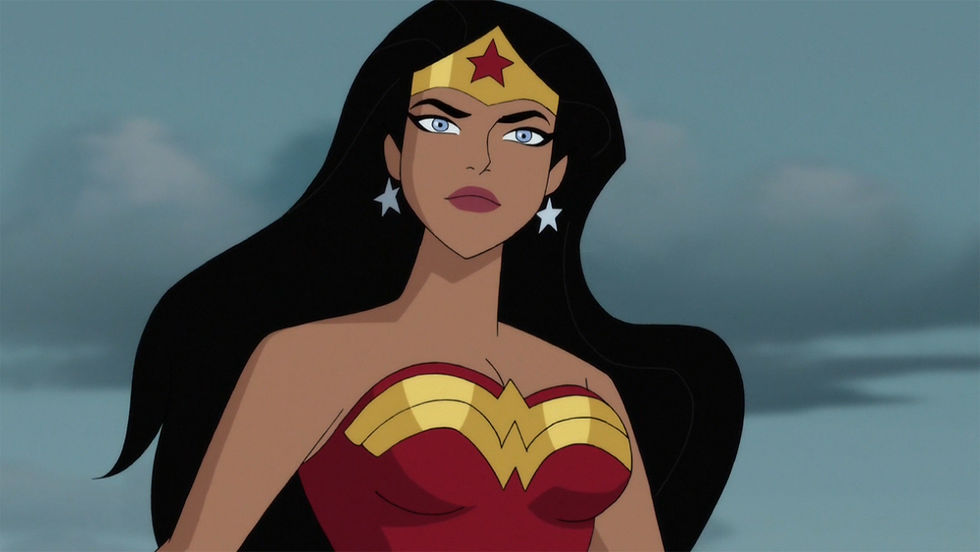
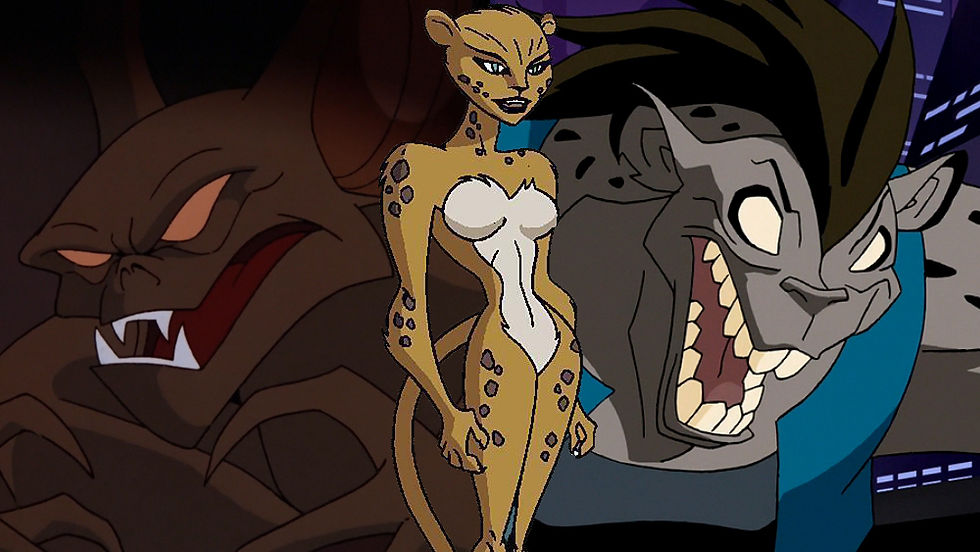

Comments